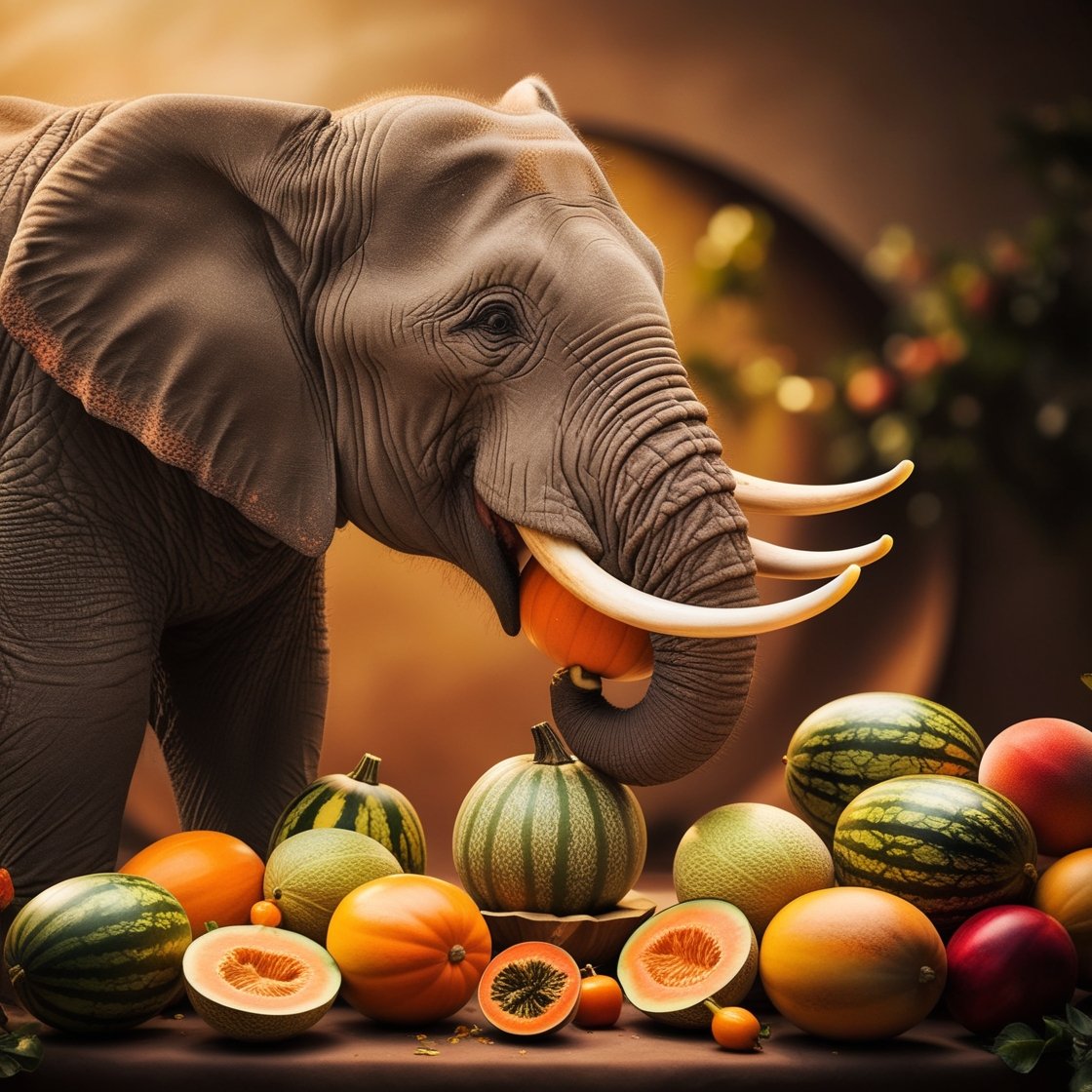Elephants, with their massive size and incredible appetites, are known for their love of various fruits and vegetables. While they can easily consume hundreds of pounds of food in a single day, their sheer strength and powerful jaws allow them to enjoy some snacks in just one bite. In this delightful instance, an elephant took a single bite of a small pumpkin, showing off its impressive ability to munch through even the toughest produce. But the real treat came afterward when the elephant indulged in a juicy melon—a favorite among these gentle giants.
The Elephant’s Appetite: Why Size Matters
Elephants are the largest land mammals, and their dietary habits reflect their enormous size. On average, an elephant can consume anywhere from 200 to 600 pounds of food each day, grazing on grasses, leaves, bark, and, of course, fruits and vegetables. Their meals are not just about sustenance but also enjoyment, as they relish in the different textures and flavors of the food they consume.
A Taste for Melons: A Refreshing Snack
After the quick pumpkin snack, it’s time for something more refreshing—a juicy melon. Elephants have a sweet tooth, and melons, with their water-rich flesh, are one of their preferred fruits. When given a watermelon or a cantaloupe, elephants waste no time. Using their trunk, they expertly pick up the melon, positioning it between their tusks and mouth. In a swift motion, they bite down, cracking open the fruit and releasing the sweet juices within.
Elephants can consume melons in just a few bites, but they savor the cool, refreshing taste, especially during hot days. The hydration provided by the water content in melons helps keep them cool and hydrated, which is vital given their large body mass and the warm climates they inhabit.
The Versatility of an Elephant’s Trunk
One of the most remarkable features of an elephant is its trunk. This versatile appendage, made up of over 40,000 muscles, serves many purposes—feeding, drinking, and even socializing. When an elephant eats, its trunk acts like both a hand and a spoon. With precise coordination, the trunk picks up small items like a melon or a pumpkin and delivers them directly to the elephant’s mouth. Elephants can even use their trunks to peel off the skin of a fruit or brush away dirt from the food before eating it.
In the case of pumpkins and melons, elephants don’t bother peeling—they love to eat every part of the fruit, getting the full range of textures and flavors in each bite.
For elephants in sanctuaries or zoos, feeding times are often filled with a variety of fruits and vegetables. Caretakers will sometimes hide these treats in different areas of their enclosures, allowing the elephants to forage and use their natural instincts to find and enjoy their food. This enrichment activity is both mentally stimulating and physically satisfying for the animals.
The Joy of Watching Elephants Eat
There’s something wonderfully entertaining about watching an elephant snack on fruits like pumpkins and melons. The contrast between their gentle nature and the sheer power they demonstrate when cracking open a pumpkin or biting into a melon is fascinating. With each bite, you can see their appreciation for the flavors, and it’s easy to see why these massive creatures have such a reputation for being food lovers.
While elephants may eat a vast range of plant materials, their preference for certain fruits showcases their playful, curious side. Watching them demolish a small pumpkin or expertly handle a slippery melon with their trunk is a reminder of how smart and skilled these creatures are.
Conclusion: A Single Bite, A Lasting Impression
An elephant’s ability to take a single bite of a small pumpkin and devour a melon in minutes is a testament to their incredible strength and their love for good food. Whether munching through the tough rind of a pumpkin or savoring the sweet juiciness of a melon, these gentle giants remind us of the joy found in simple pleasures.


